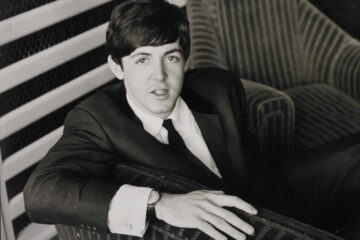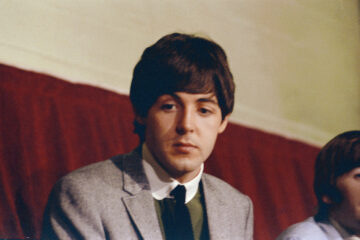As a project, the production that led to their last studio album (to actually be released, that is) was always fraught. And the ultimate result was an album The Beatles regretted making.
,
Given the working title of Get Back, the LP to be named Let It Be was conceptually murky and backward-looking. The band intended it to be a return to basics in reaction to the complicatedness and animosity surrounding the making of “The White Album.” Despite the band’s attempt to create a more harmonious recording experience, arguments and delays ensued. George Harrison even quit the group for five days.
People Bought It, Though
Though it was flawed and received an uneven reception from critics, Let It Be was an unqualified commercial success. It’s one of the Beatles’ 19 No. 1 albums on the Billboard 200, and its 79-week stay on the chart was longer than Rubber Soul’s. It also spawned three chart-topping hits—”Get Back,” the title track, and “The Long and Winding Road”—on the Billboard Hot 100.
The Beatles had certainly recorded albums under tense circumstances before. But this one is notable for the scorn that they heaped upon the final product. Each of the Beatles has registered their opinions about the album, and the consensus is largely negative.
Love it or hate it, Let It Be is an unusual album in the Beatles’ discography. A quick refresher on how the album came together can shed some light on their reaction to it. (Or, if you have several hours, be sure to watch the Peter Jackson-directed documentary Get Back, which captured the process of the album’s creation.)
Let It Be’s Patchwork Quality
The Beatles did succeed in creating a more raw, informal feel for Let It Be. Some of that has to do with the bluesy nature of some of its tracks and the uncomplicated arrangements on certain songs. It also is the result of the album being a patchwork of different recording environments. The initial plan for Let It Be was for The Beatles to create an album of live performances of new compositions. However, the band couldn’t get it together in time to play their planned live dates. Harrison’s brief departure and John Lennon’s lack of songwriting contributions were factors leading to .
Ultimately, the Beatles pieced an album together from several different recording sessions. They took three songs (“Dig a Pony,” “I’ve Got a Feeling,” and “One After 909”) from their famous rooftop concert. They enacted that performance as a Plan B when other attempts to do a live performance failed. And then they made live recordings of another four songs (“Two of Us,” “Dig It,” “Maggie May,” and “Get Back”) during rehearsals. And “Across the Universe” came from a prior studio session in 1968. Lennon and Harrison sent the remaining four tracks (“I Me Mine,” the title track, “The Long and Winding Road,” and “For You Blue”) and “Across the Universe” to Wall of Sound girl-group producer Phil Spector for overdubs and production. The Beatles then completed the title track and “I Me Mine” after Lennon had left the group in September 1969.
So the band had pieced the album together from disparate elements. And it was not inevitable that it would be an album at all. The Beatles rejected the initial mixes created by Glyn Johns, and at that point, they moved on to writing and recording songs for Abbey Road. Though they started it after Let It Be, they released Abbey Road more than seven months earlier. It was only when they called Spector in to produce Let It Be that it was able to see the light of day.
McCartney’s Response to Let It Be
It was that final step of involving Spector that irked McCartney. He was particularly upset with the orchestral treatment of “The Long and Winding Road,” McCartney was angered to the point of firing off an angry letter to Spector and Apple Corps head Allen Klein. Before admonishing them to never alter his songs without permission again, McCartney listed a series of changes he wanted for “The Long and Winding Road.” Those changes were not implemented for the final version of Let It Be.
Spector’s production put a big enough bee in McCartney’s bonnet that he oversaw the release of a 2003 remixed version of the album called Let It Be…Naked. McCartney used a different recording of “The Long and Winding Road”—with no orchestral embellishments—for the Naked album. In addition to including newly edited versions and remixes of songs, McCartney took “DIg It” and “Maggie Mae” out of the track listing, replacing it with the “Get Back” B-side, “Don’t Let Me Down.” While the album was originally released as a soundtrack for the 1970 Let It Be documentary, McCartney refashioned his Naked version as a more coherent stand-alone album.
The Other Beatles Weighed in, Too
Lennon was not a fan of the album and was particularly caustic about the title track. In a 1980 interview with Playboy, he said the song had “nothing to do with the Beatles. It could’ve been Wings. I don’t know what [McCartney]’s thinking when he writes ‘Let It Be.’” Regarding the full album, Lennon damned it with faint praise in a 1971 Rolling Stone interview. He said that the version he sent to Spector was “the s—iest load of recorded s–t.” Of the final product, Lennon opined, “(Spector) did a great job. When I heard it, I didn’t puke.”
While Harrison didn’t comment on how the album affected his digestion, he registered a negative appraisal. He once spoke for the group, saying, “Everybody listened to it back and didn’t really like it, and we didn’t really want to put it out.”
Ringo Starr may be the one Beatle who has actually thought highly of Let It Be, having once said “it’s a great album.” He said this while revisiting the difficulties the Beatles encountered in making the album. Though Starr apparently likes Let It Be, it’s fair to say that the group were unanimous in their dislike of actually creating the last studio album they would ever release.



